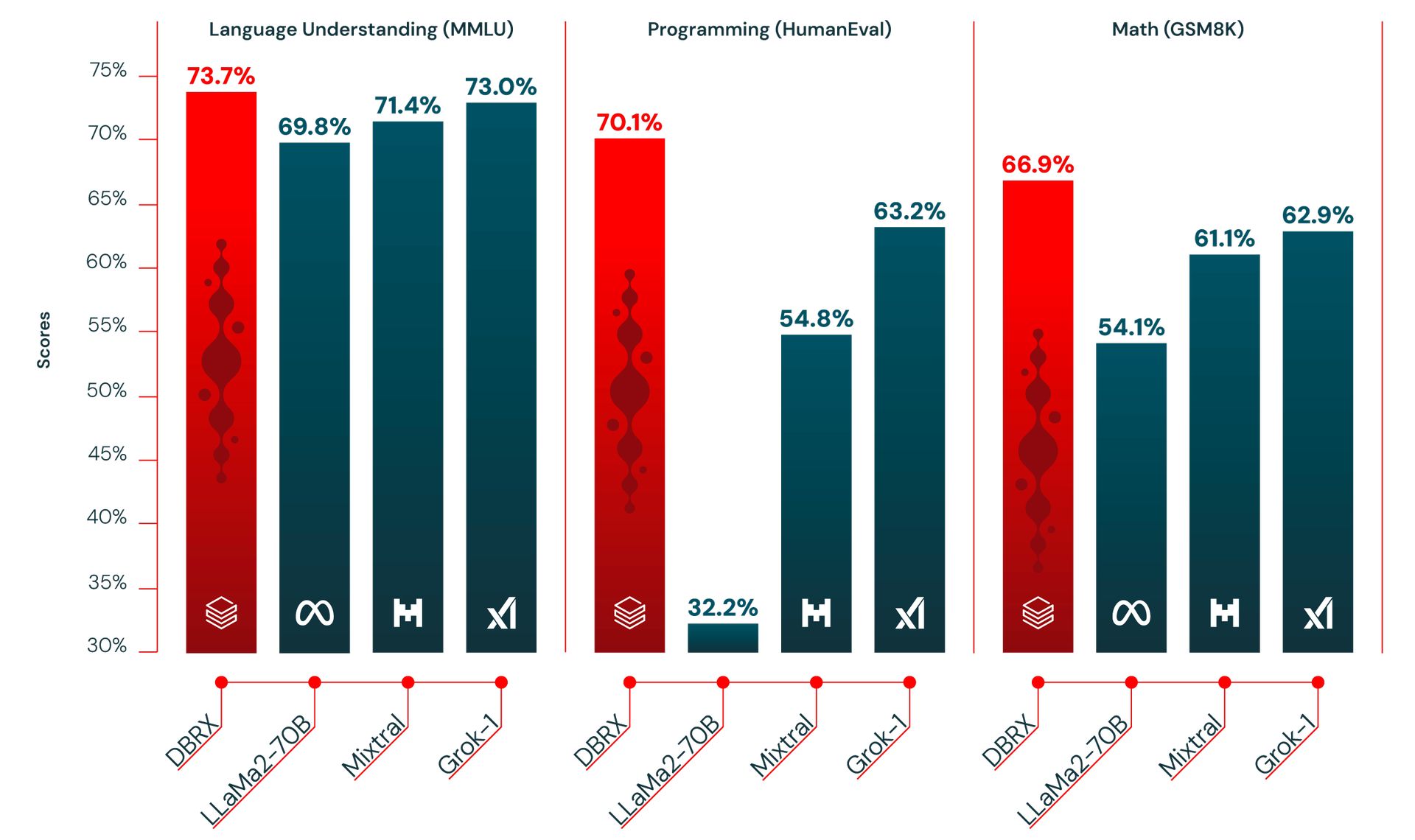Databricks presents DBRX, an innovative open-source language model poised to revolutionize language understanding. Built on an advanced architecture, DBRX shows remarkable progress in tasks like coding and solving math problems. Outperforming some models, you think they are the best in the LLM market!
But what sets DBRX apart from the rest? Let’s delve deeper into its development process and explore the exciting capabilities it offers.
What is DBRX?
DBRX is an open-source large language model (LLM) developed by Databricks, aiming to offer a competitive alternative in the rapidly evolving landscape of artificial intelligence. Built upon a fine-grained mixture-of-experts (MoE) architecture, DBRX demonstrates notable advancements in language understanding, particularly in programming and mathematical reasoning tasks. Notably, it outperforms some established models like GPT-3.5 and competes reasonably with closed models such as Gemini 1.0 Pro.

DBRX was developed through an intensive process that spanned three months, building upon months of prior research and experimentation. The training was conducted on a powerful infrastructure consisting of 3072 NVIDIA H100s connected by 3.2Tbps Infiniband. Leveraging Databricks’ suite of tools, including Unity Catalog for data governance, Lilac AI for data exploration, Apache Spark and Databricks notebooks for data processing, and optimized training libraries such as MegaBlocks and LLM Foundry, DBRX was trained and fine-tuned across thousands of GPUs using Mosaic AI Training service. Results were logged using MLflow, and human feedback was collected for quality improvement through Mosaic AI Model Serving and Inference Tables.
So, what can DBRX do? It can do many things, like answering questions, writing code, solving math problems, and analyzing data. It can also help with writing by correcting grammar and suggesting improvements. DBRX can understand different languages and even analyze feelings in text. It’s like a smart assistant that can do a lot of tasks involving language and data. Also, users can customize it for specific needs. DBRX might surprise you with its performance compared to other popular LLMs.

Accessible to developers and enterprises, DBRX provides both the base model and finetuned versions under an open license, encouraging collaborative exploration and innovation. Its emphasis on efficiency in both training and inference, alongside its manageable size, makes it a potentially cost-effective solution for various AI applications.
How to use DBRX
Using DBRX is made accessible through various means provided by Databricks:
- Foundation Model APIs: Databricks offers Foundation Model APIs, which allow users to interact with DBRX through a simple interface. Users can leverage these APIs to integrate DBRX into their applications and workflows.
- AI Playground Chat Interface: For quick experimentation and testing, users can access DBRX through the AI Playground chat interface. This interface provides a user-friendly environment for interacting with the model and exploring its capabilities.
Overall, by leveraging the tools and resources provided by Databricks, users can easily incorporate DBRX into their workflows and harness its capabilities for a wide range of applications in natural language processing and AI.
Featured image credit: Databricks





